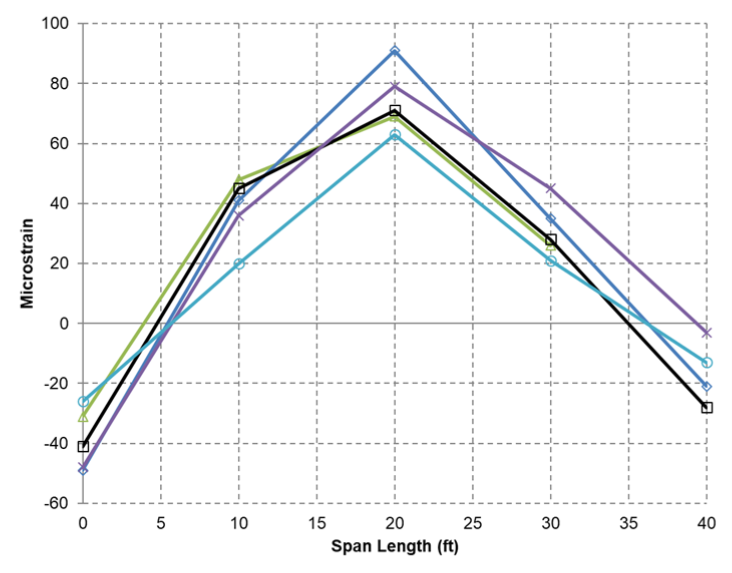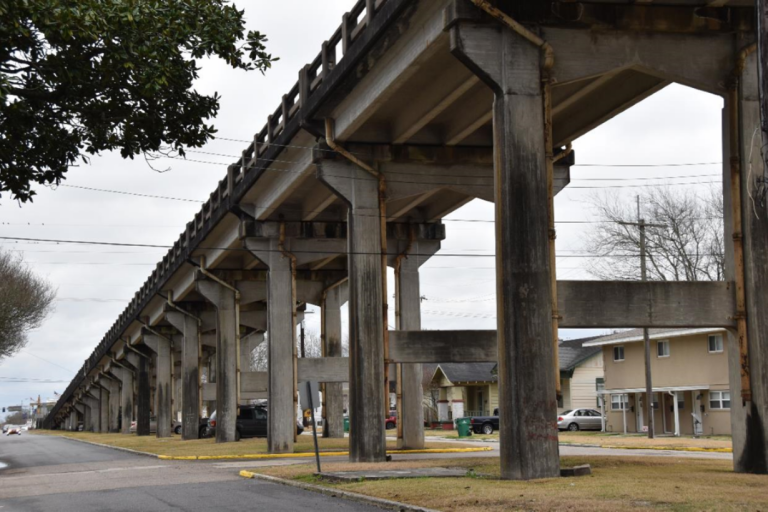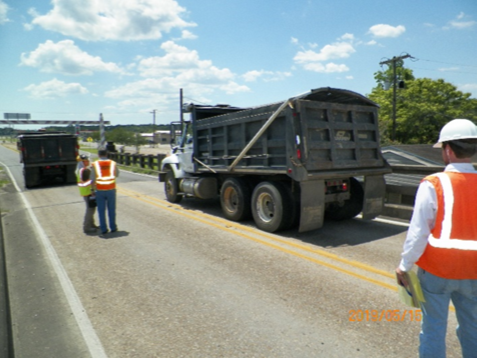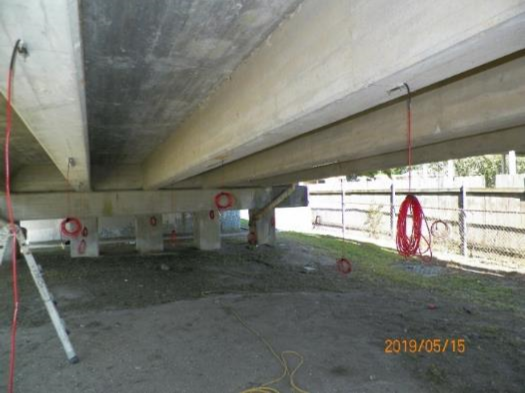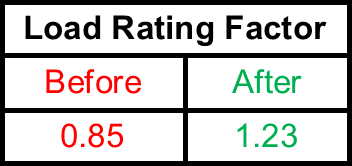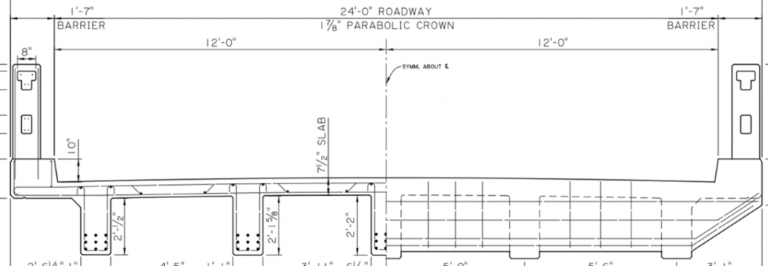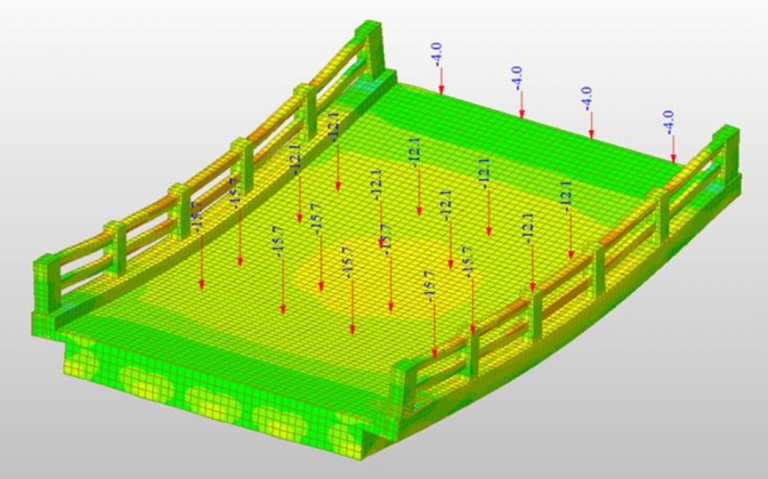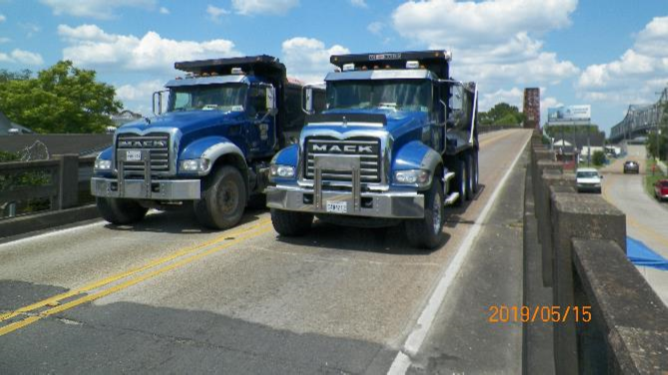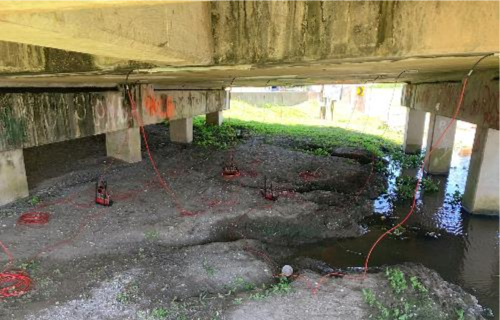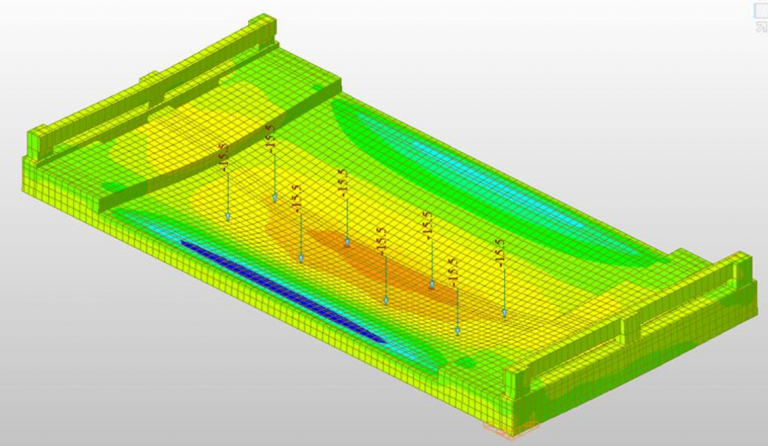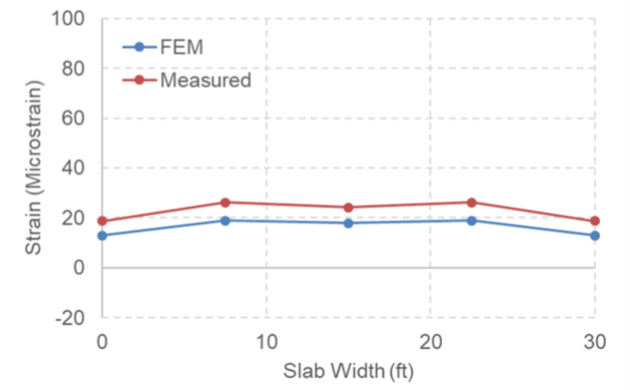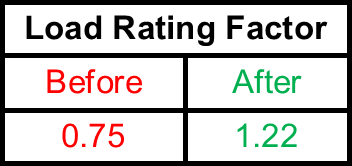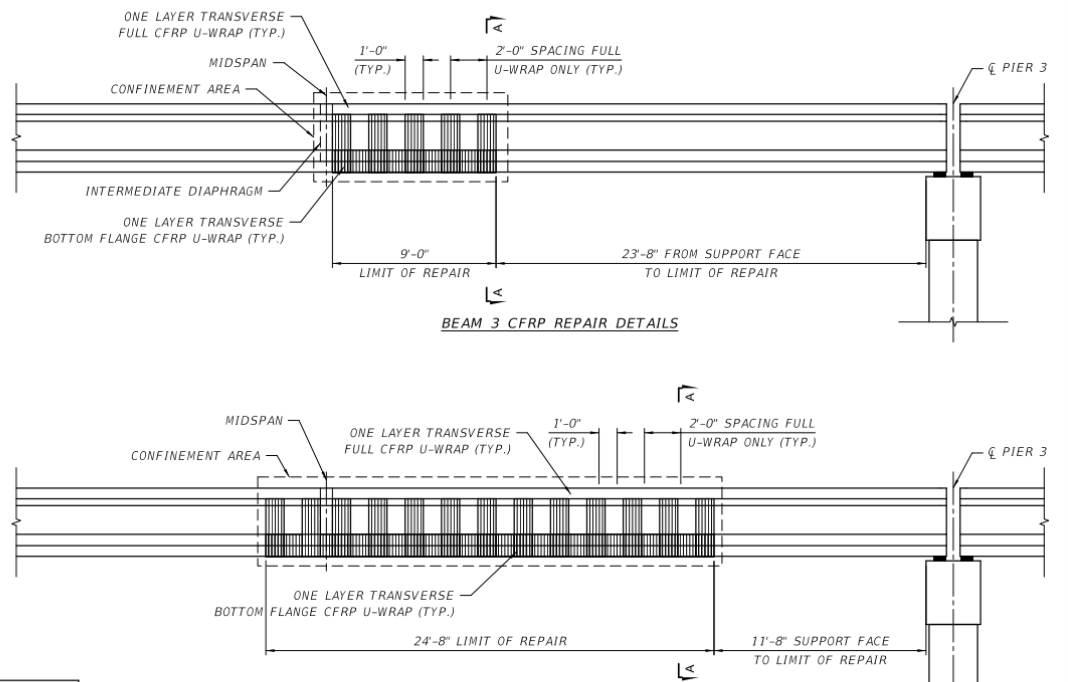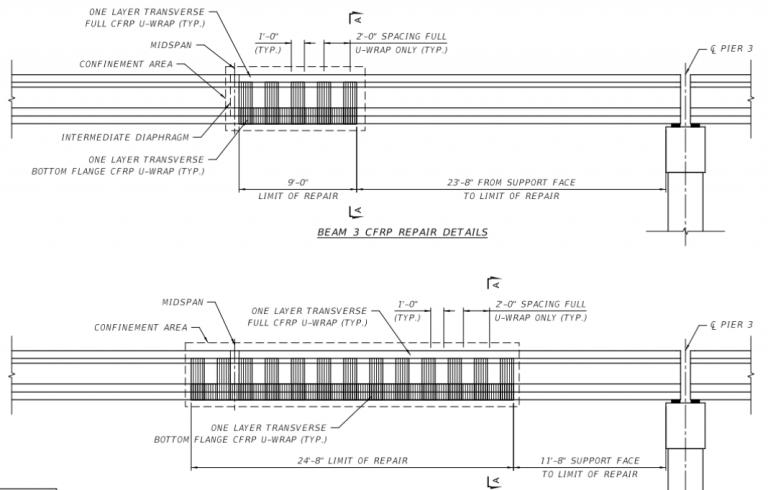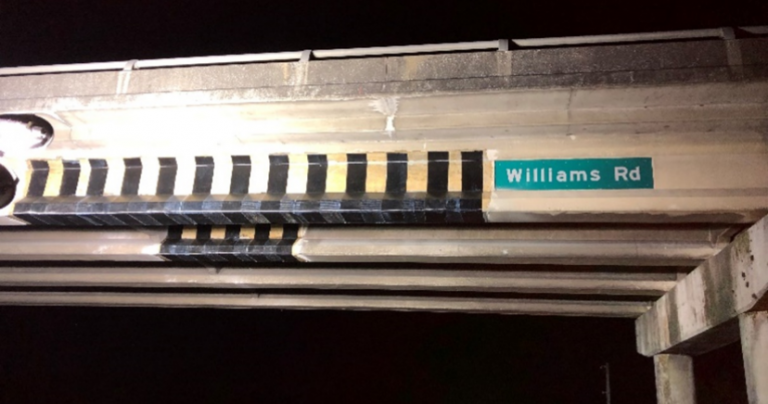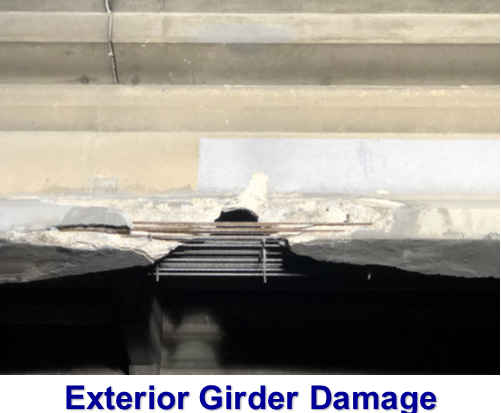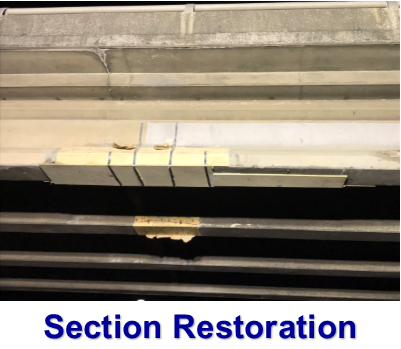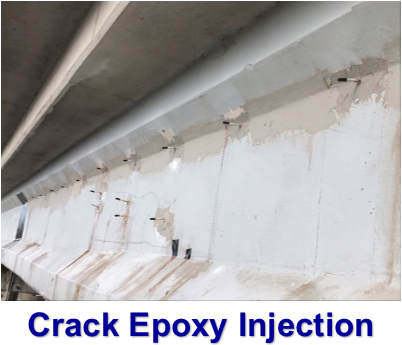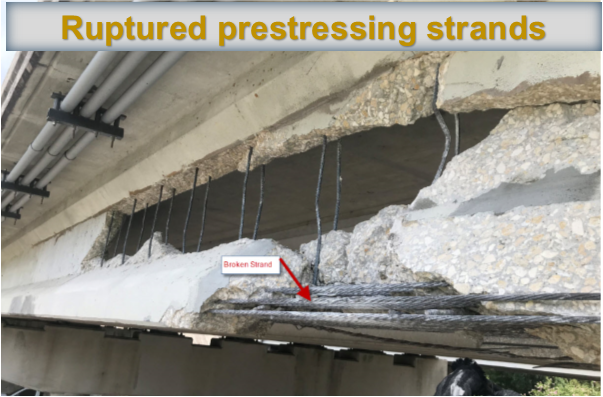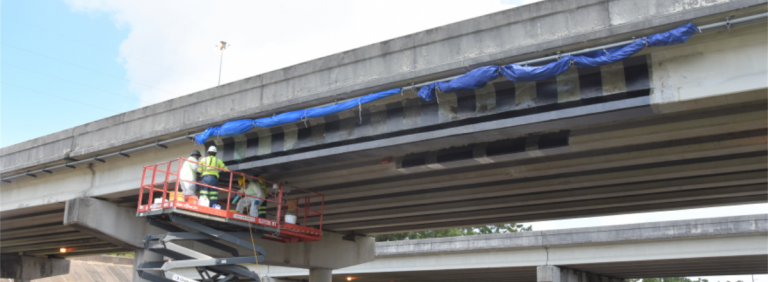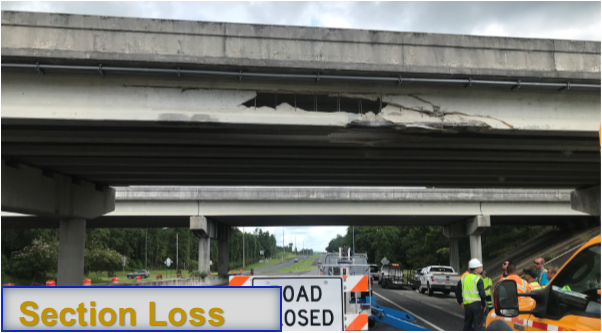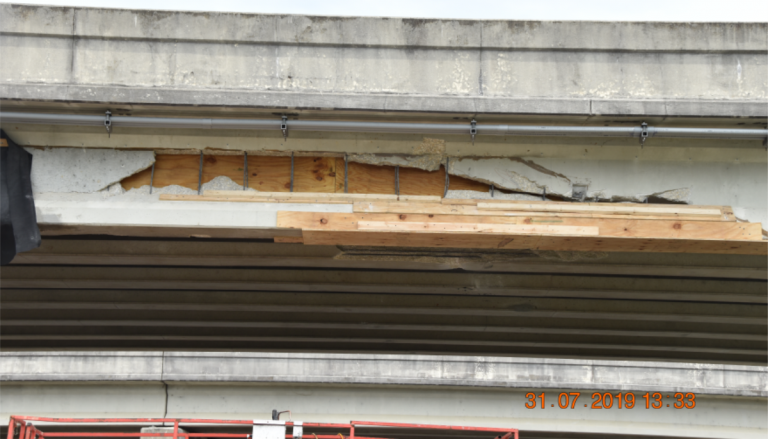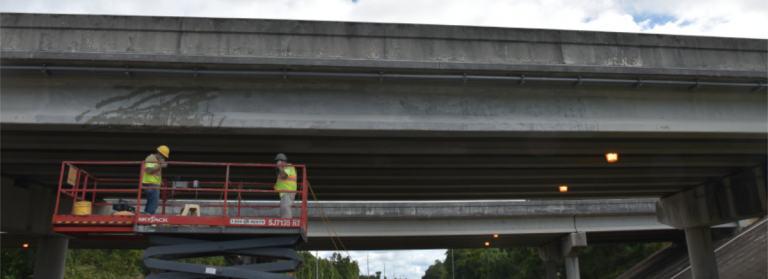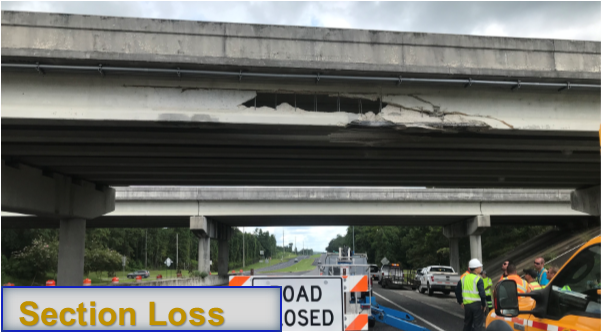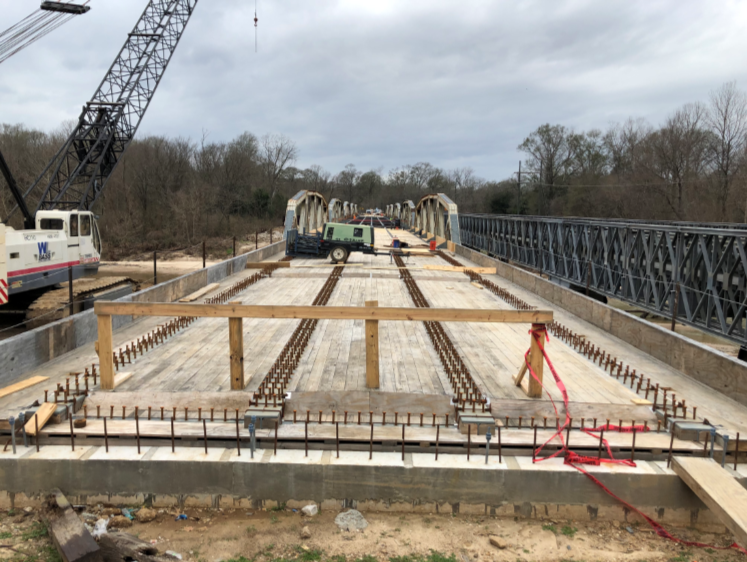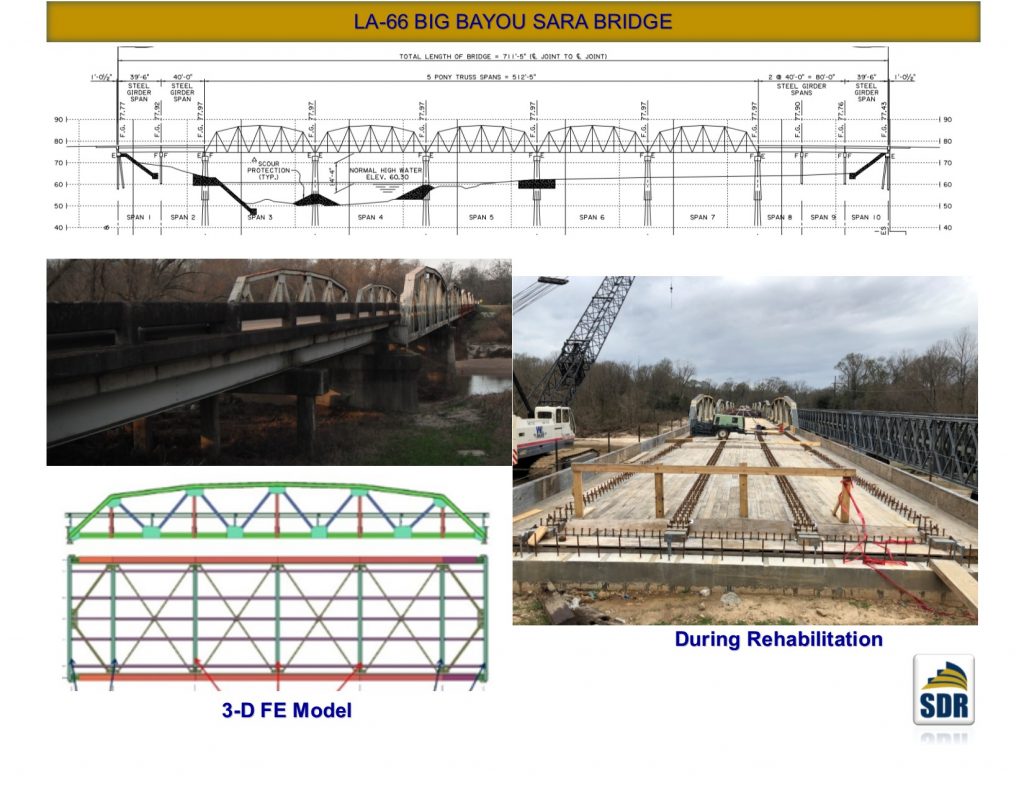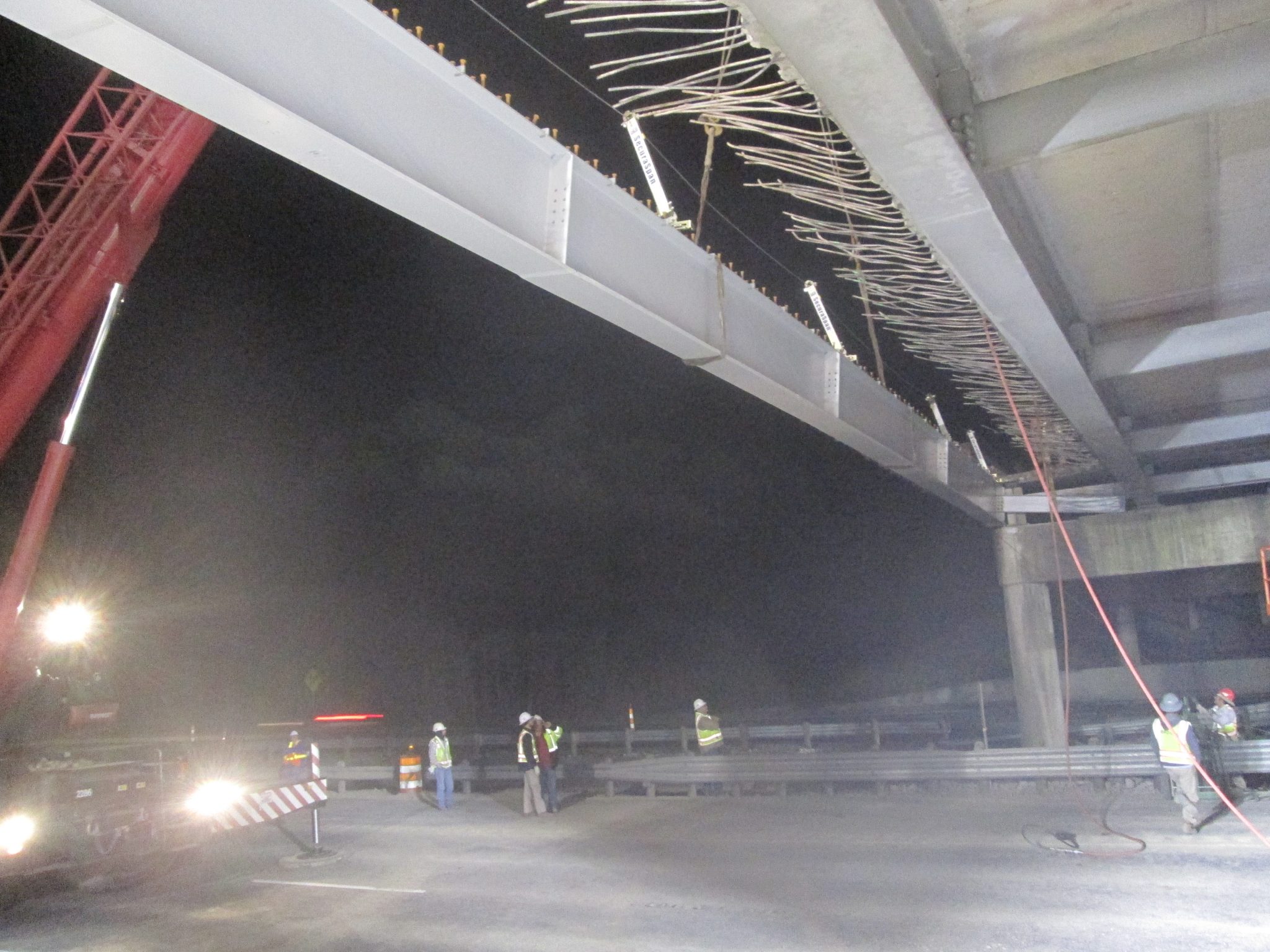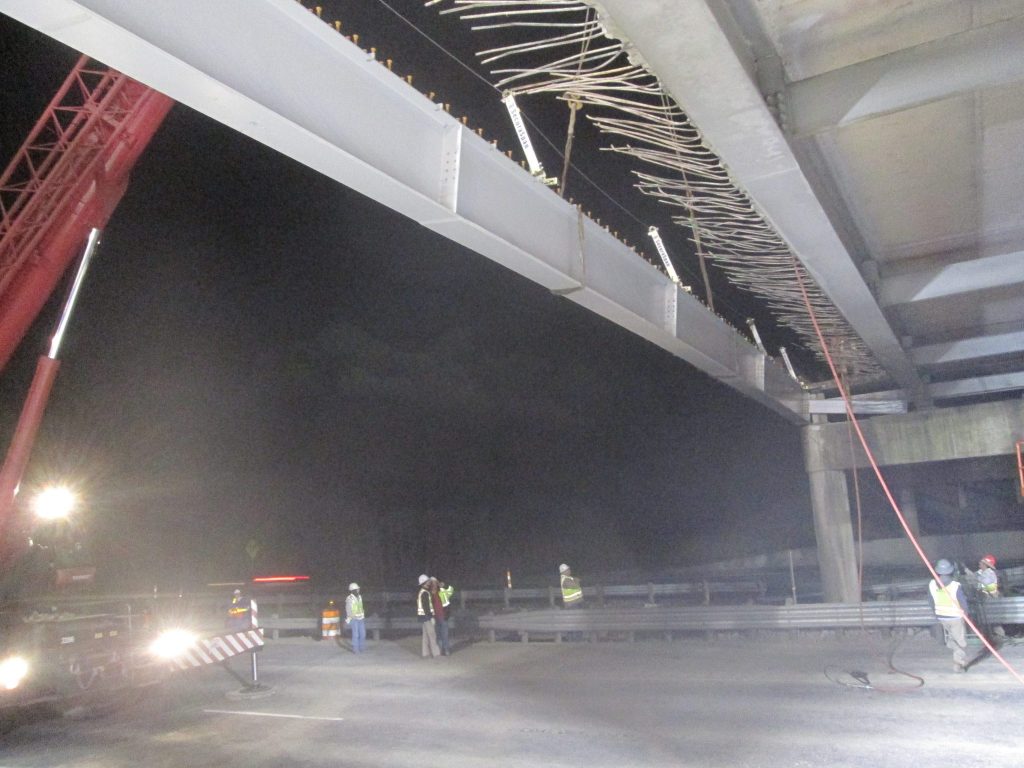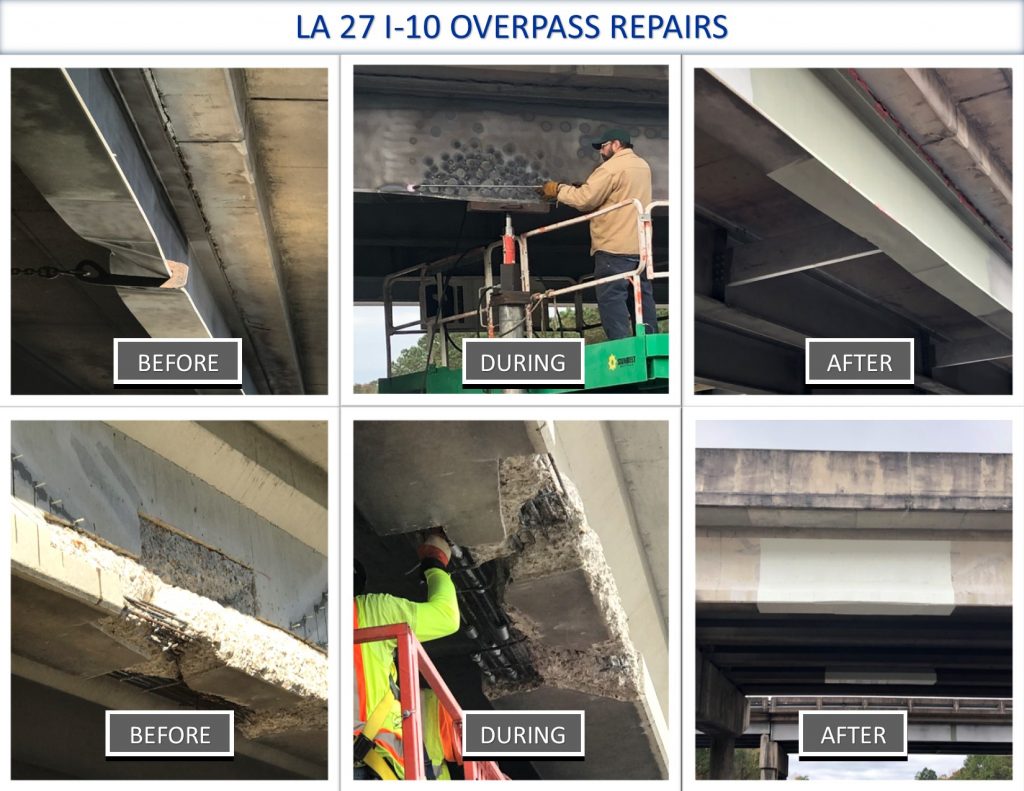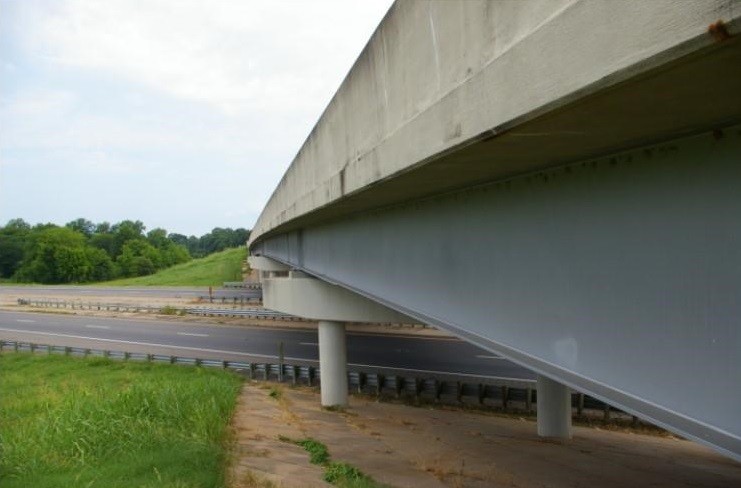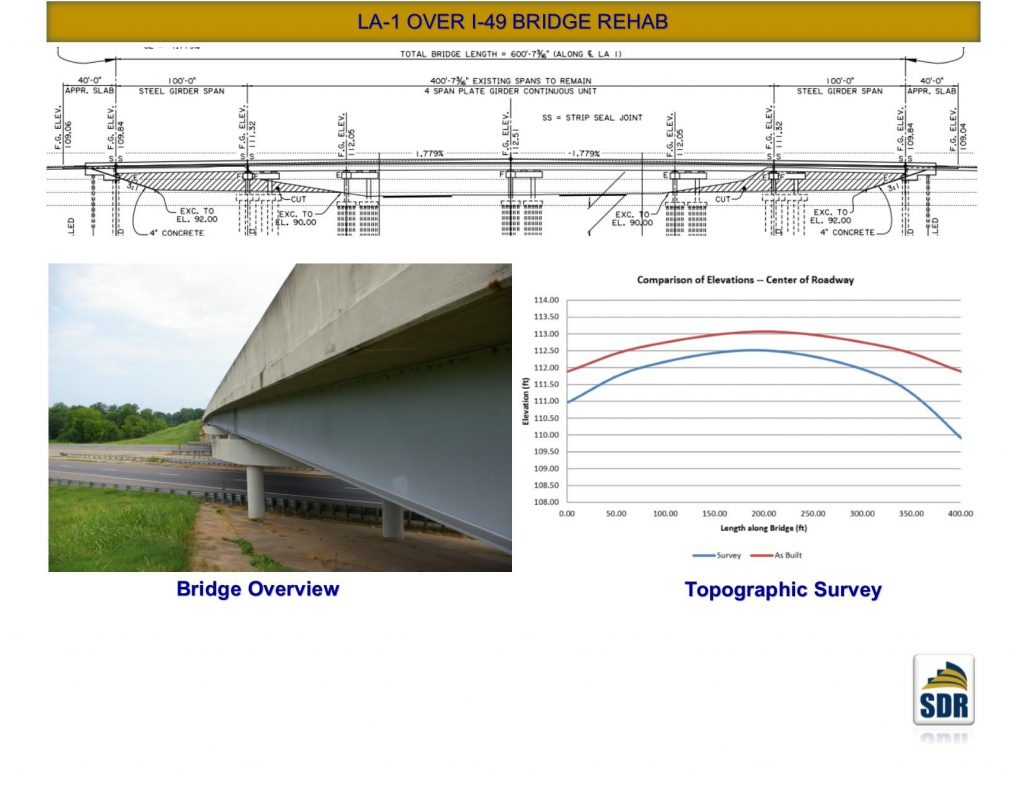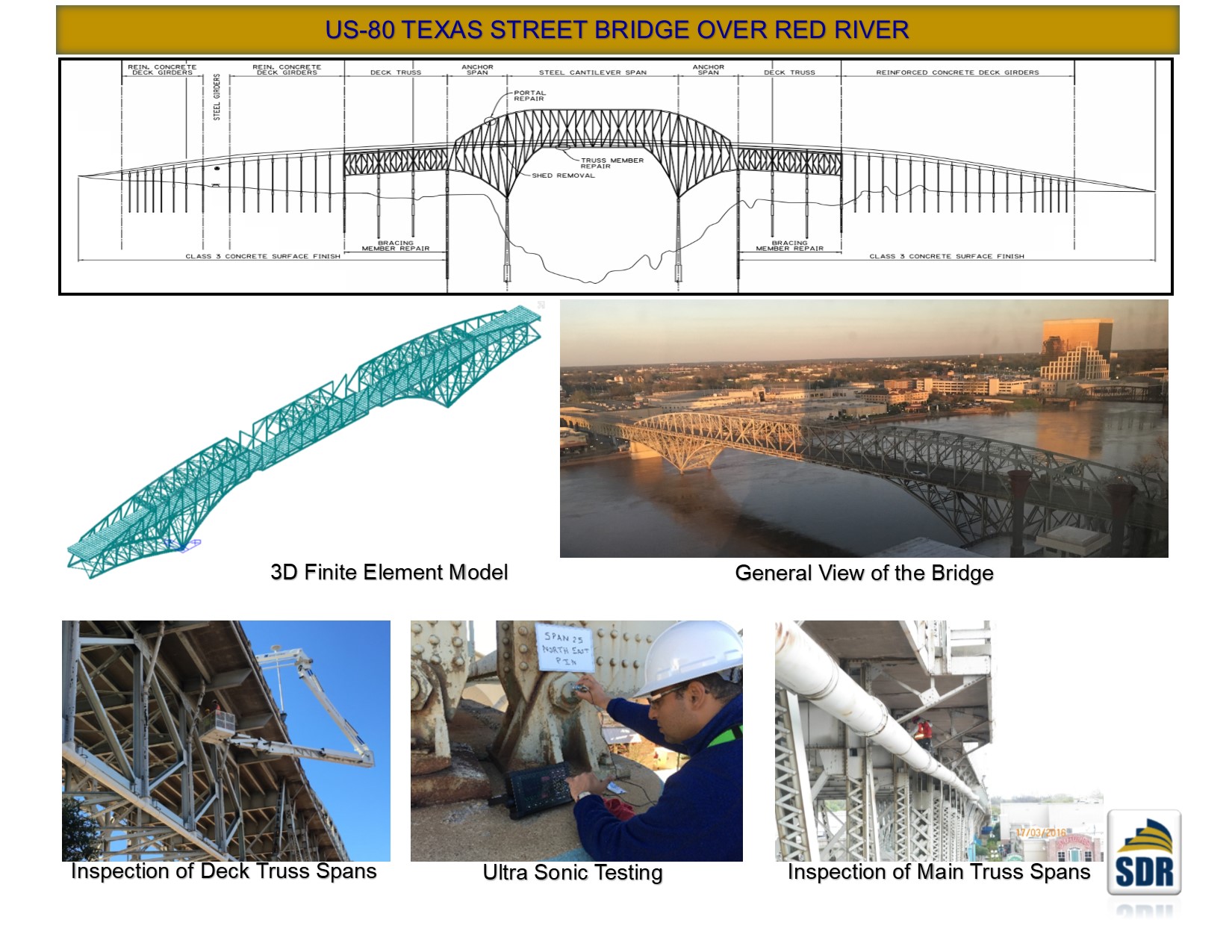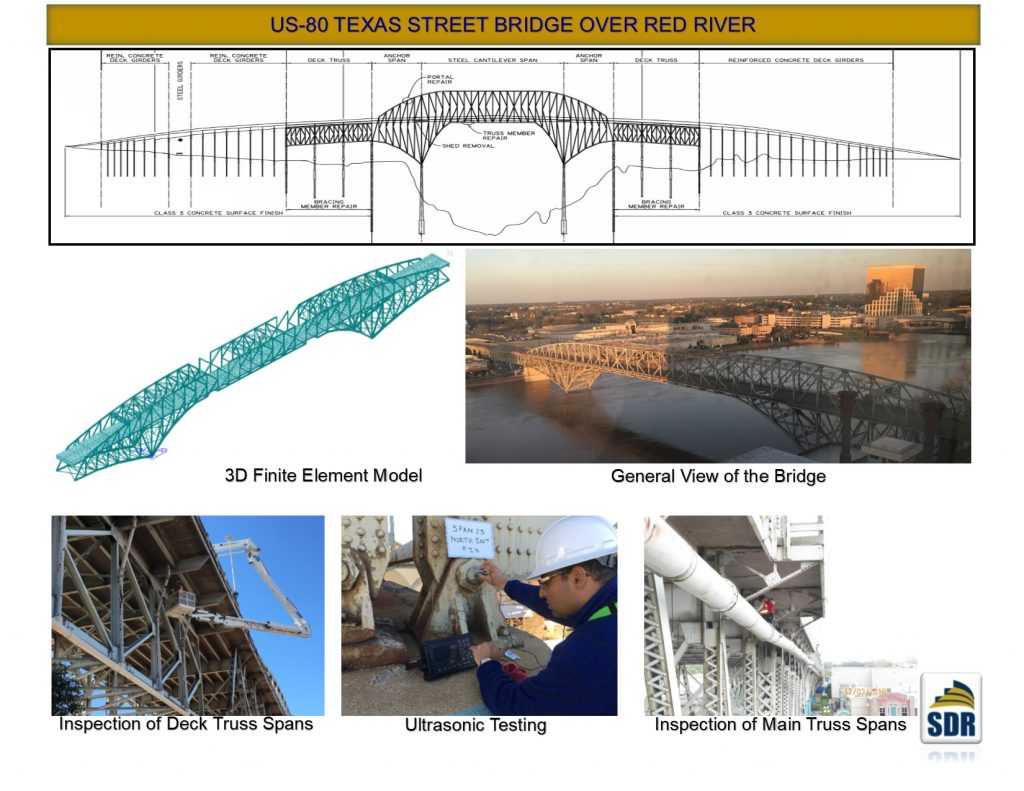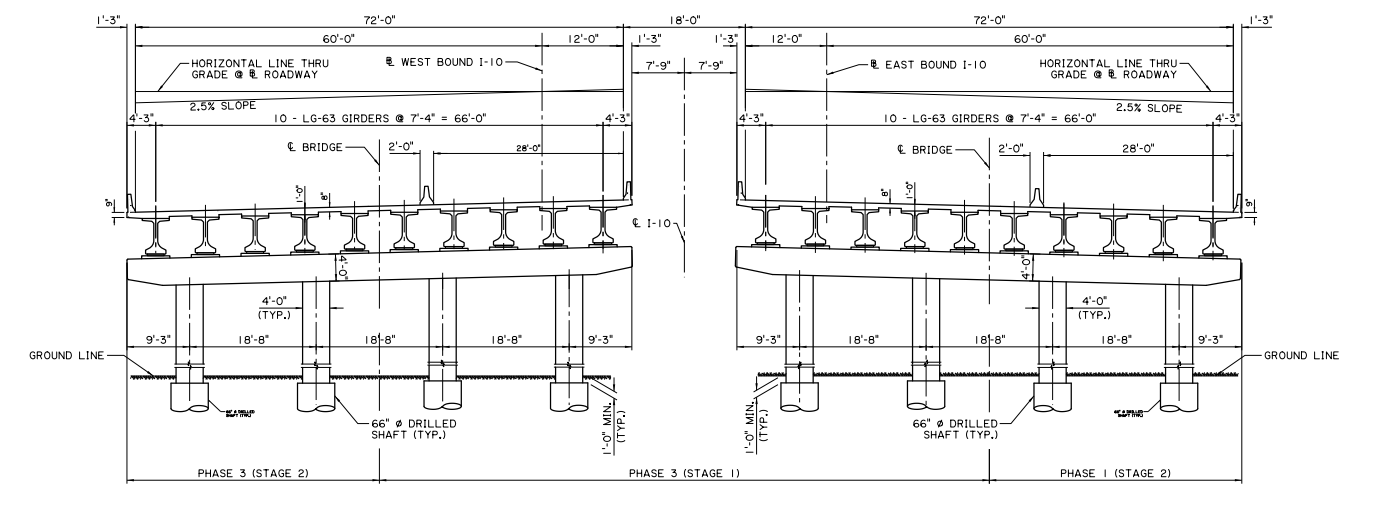STRUCTURAL EVALUATION OF RC T-BEAM BRIDGES THROUGH LOAD TESTING & FEA
Structural evaluation through load testing coupled with advanced Finite Element Analysis (FEA) is a powerful tool to load rate posted bridges with the aim of removing current postings. Based on SDR’s vast experience in structural evaluation and load testing, bridges can carry much higher loads than those estimated by design codes equations. Load testing captures actual behavior of the structure (load distribution) and accounts for strength enhancing factors not included in design
The load rating of LA 182 bridge over Berwick Bay is controlled by reinforced concrete T-beam spans. SDR was tasked with performing the structural evaluation though load testing of the T-beam spans with the aim of removing the current posting.
Test results and FEA reveal that, due to support conditions of the slab, partial fixed end moments are developed, causing significant reduction in mid-span moment compared to moment calculated assuming simple-beam action. Load rating of the bridge was carried out in consideration of the test findings and FEA results, resulting in an increase of load rating factor from 0.85 to 1.23.
